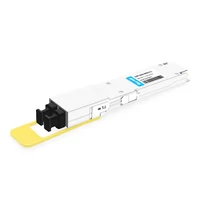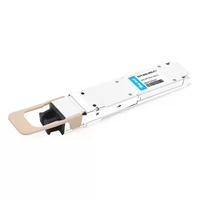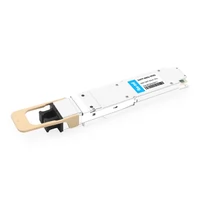In an age when data demand grows exponentially, high-speed optical transceivers are evolving to become indispensable network infrastructure components. Among these cutting-edge solutions is OSFP112 (Octal Small Form-factor Pluggable 112), which provides more bandwidth while consuming less power and being more dependable. This article examines the technical specifications, benefits, and areas where OSFP112 transceivers are used, thus giving a deeper understanding of their part in shaping future optic networking technologies. As we go through these sections, we will see how much faster information can be transferred with OSFP112 and its ability to meet the needs of modern communication networks that are rapidly increasing.
Table of Contents
ToggleWhat is osfp112 and How Does It Work?
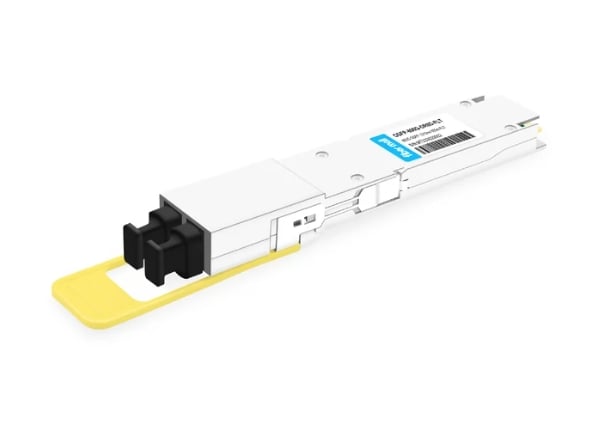
Understanding osfp112 Transceiver Technology
To attain higher data rates of 112 Gbps per channel, the OSFP112 transceiver uses advanced optical components. To double the adequate data capacity within the same bandwidth, PAM4 (Pulse Amplitude Modulation) is employed by it. To illustrate this technology, eight distinct channels are integrated, permitting 800 Gbps as an aggregate bandwidth within one module. What distinguishes OSFP112 from other designs is its emphasis on thermal efficiency and low power consumption that ensures long-term stability of network operation; additionally, the hot-swappable feature enables easy installation or replacement into existing infrastructures, thus greatly enhancing flexibility and scalability for contemporary optical networks.
How osfp112 Differs from Other Transceivers
Several features set the OSFP112 transceiver apart from other transceivers. It can transmit up to 112 Gbps per channel using PAM4 modulation, which doubles the data rate compared to traditional NRZ (Non-Return-to-Zero) modulation used by previous transceivers. Additionally, this transceiver integrates eight channels that provide an aggregate bandwidth of 800 Gbps – a significant improvement in high-demand environments.
Furthermore, the OSFP112’s design emphasizes power consumption and thermal efficiency so that it can operate optimally in densely populated data centers where heat dissipation and energy usage are critical concerns. Besides being hot-swappable—meaning it can be replaced without interrupting network connectivity—this device also helps maximize uptime and operational flexibility during maintenance activities. Advanced technologies and innovative capabilities make the OSFP112 ideal for modern optical networking requirements.
The Role of PAM4 in osfp112 Communication
The OSFP112 transceiver relies heavily on PAM4 (Pulse Amplitude Modulation with four levels) to enhance its communication capabilities, mainly by improving the efficiency of transmitting data. PAM4 doubles the bits per symbol, thus enabling higher data rates using the same bandwidth compared to NRZ, a traditional binary encoding method. This development allows each channel to transmit up to 112 Gbps, thereby greatly increasing throughput in high-speed data networks. In addition, by broadening access beyond limitations on frequency range, this technology will help meet current requirements for fast processing speeds and strong performance across a variety of applications, such as enterprise networks or data centers within modern optical systems where there is a need for quick information exchange.
What Are the Key Features of 800g osfp112?
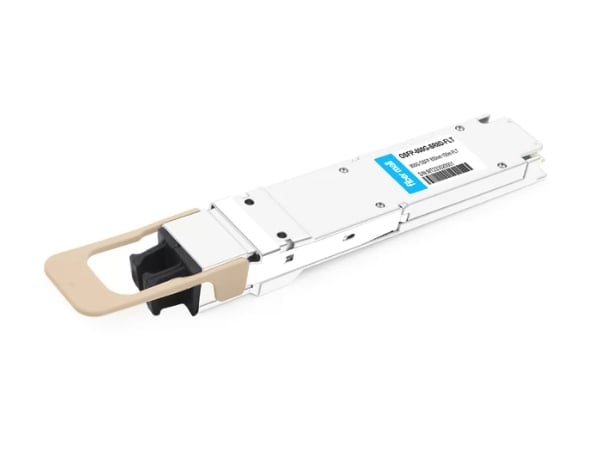
High-Speed Data Transmission
The OSFP112 can support high-speed data transmission at 800 Gbps over many channels. This is done by using better signaling methods and more advanced modulation techniques that make the best use of available bandwidth while reducing signal degradation at long distances. These capacities are further boosted by employing PAM4 modulation, enabling the OSFP112 to transmit much more data per second than other standard systems do. Besides, this design features powerful error correction that ensures reliability in communication through effective protection of information integrity during transfer, even in demanding conditions. Therefore, all these properties make it necessary for contemporary data center designs as well as sophisticated networking environments where speed matters most.
Compatibility with Existing Systems
With the aim of interoperability, the OSFP112 has been made to work with many network systems and infrastructure types. It follows well-known industry standards like IEEE 802.3 and OIF, enabling it to integrate with existing data center environments without any difficulty. Also, the modular design of the OSFP112 enables it to be used in various form factors and platforms that meet industry standards, thus minimizing reconfiguration needs. This protects investments currently held and makes it easier to move into higher data rates while not compromising performance over old systems. In so doing, the OSFP112 encourages flexible upgrading of networks so that organizations can cope with growing demands for bandwidths while maximizing their present resources efficiency-wise.
Comparison with 400g osfp112
There are some performance and capability differences when comparing the OSFP112 with its predecessor, the 400G OSFP112. The data transmission rate of this 400G version is higher and can reach 400 Gbps, which is far more than what the previous generation could offer. This increased bandwidth is achieved through advanced modulation techniques such as PAM4, which efficiently utilizes the available spectrum. Additionally, enhanced error correction protocols supported by this 400G OSFP112 ensure better reliability in transmitting data, especially in heavy-demand scenarios. However, while being faster than any other model at speed, it might also provide benefits in terms of energy efficiency or thermal management, thus making it an attractive option for certain applications where power consumption is critical but not limited to that alone. Moreover, both units are compatible with industry standards, hence ensuring easy integration as well as upgrades into existing infrastructures. Ultimately, whether one selects an OSFP112 or a 400G OSFP112 depends on their own organization’s needs, balancing quickness on one side against energy saving and system compatibility on the other.
How to Choose the Right Optical Cable for osfp112?
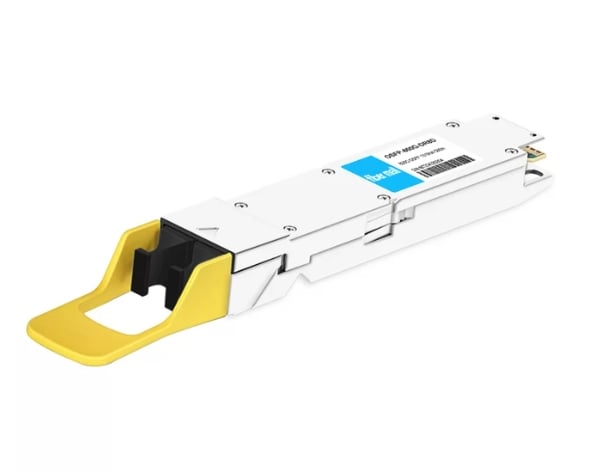
Understanding Different Fiber Types: MMF vs. SMF
It is vital to comprehend the differences between multi-mode fiber (MMF) and single-mode fiber (SMF) when choosing the right optical cable for the OSFP112. Multi-mode Fiber (MMF) is designed for short-range communication by sending light through many paths or modes in its core. A larger core diameter, usually at 50 or 62.5 microns, provides higher bandwidth, allowing high speeds over short distances of around 300 meters. It is often used in data centers and LANs where fast transmission rates are needed only over limited spaces.
On the contrary, Single-Mode Fiber (SMF), which has a smaller core diameter of about 9 microns, can transmit light directly down the fiber without any other lights interfering due to different paths they may follow while being transmitted. This construction permits much longer transmission distances that sometimes exceed 10 km and maintains better signal integrity over more extraordinary lengths. For this reason, SMFs are commonly used in telecommunications systems covering broad areas since they require higher bandwidths coupled with extended links. Whether to use MMF or SMF should ultimately be based on various network factors such as distance, bandwidth, and cost implications, among others; hence, one needs to consider these operational environments when selecting appropriate optical cables for OSFP112.
Distance Considerations: 100m vs. 500m
Many factors must be considered when deciding whether to use 100-meter or 500-meter optical cables. Among the most important are signal attenuation and application suitability. Both multimode fiber (MMF) and single-mode fiber (SMF) can transmit high-speed data with low signal loss over 100 meters, so they are perfect for short-range applications like interconnecting data centers or creating local area networks. With a big core size that provides enough bandwidth for high-speed Ethernet at this distance, MMF works well even though SMF operates efficiently here.
However, if we increase the length to 500 meters, typically multimode fiber will be an excellent choice due to its ability to maintain high bandwidth within shorter ranges besides being cost-effective where such capabilities are required without covering very far distances; nevertheless, caution should taken by operators since signal transmission quality may decline over long spans especially when cable used is not rated adequately for these applications. Therefore, either can work depending on usage, but this mostly depends on the network setting being used, the distance needed, and the amount available.
Choosing Between 850nm and 1310nm Wavelengths
In choosing whether to use 850nm or 1310nm wavelength for optical transmission, some key things need to be considered, which include the type of fiber being used (singlemode or multimode), distance of transmission, and application requirements. Typically, the 850 nm wavelength is used with multimode fibers because it supports higher bandwidths over short distances up to about 300 meters using OM3 fiber and even more on OM4 fiber. At the same time, the other one can be employed in single-mode fiber optic cables for long haul applications where signals must traverse distances greater than 10 km without losing too much power due to attenuation caused by absorption or scattering along its path as well as this can be useful when dealing with stabilizing over broader ranges since it reduces modal dispersion. Among those two options, the decision should depend on the current network architecture adopted by the organization, considering the scalability plan for future growth and other factors like general design rules applicable across systems.
How Does osfp112 Integration Improve Data Centers?
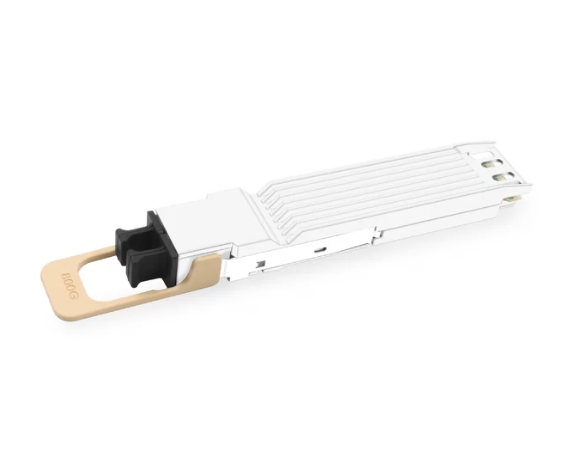
Enhancing Data Center Networking with 800g osfp112
The networking capabilities of data centers are significantly improved by integrating 800G OSFP112 technology because it provides greater bandwidth and efficiency. This enables them to deal with the growing need for data transmission by cloud computing, big data analytics, and high-performance computing applications. Rack space utilization is optimized while power consumption per bit transmitted is reduced by half compared to previous modules due to doubling density achieved through OSFP112 modules, especially in conjunction with 100G DAC solutions. Additionally, these modules have advanced thermal management systems that ensure reliable performance in harsh operational environments, allowing easy scalability and future-reading network infrastructure for handling larger volumes of information traffic.OSFP112 offers better operational efficiency, leading to lower latency and higher overall throughput, which makes organizations more competitive in today’s data-centric world.
Benefits of osfp112 in Ethernet and Infiniband Networks
The interface OSFP112 has many advantages over Ethernet and Infiniband networks, which are crucial to enhancing performance and efficiency in data-intensive environments. First, the capability of OSFP112 to have a high bandwidth of up to 800 Gbps ensures the smooth transfer of data required by current applications such as real-time analytics and virtualization. Secondly, it allows more connections within a given physical space due to its increased port density, which is necessary for resource optimization in data centers, especially with parallel optical fiber channels. This system also supports advanced error correction and signal integrity improvements that help reduce data losses during transmission, ensuring high reliability. Moreover, being compatible with existing Ethernet and Infiniband frameworks makes it possible for organizations to transition easily towards next-generation networking solutions, thus assisting them in future scaling without much infrastructure overhaul required. This adaptability, coupled with lower power consumption and reduced heat production over legacy systems, clearly shows why OSFP112 should be considered an essential building block for evolving network strategies.
Reducing Latency and Increasing Bandwidth
Optimizing network performance in data-heavy environments requires reducing latency and increasing bandwidth. One strategy for this is to use Quality of Service (QoS) protocols, which prioritize essential traffic and relieve bottlenecks during periods of high demand. Another option is upgrading to higher-capacity network interfaces like the OSFP112 so that more information can be processed faster, thus easing congestion. Among other things, it is possible to reduce the hops necessary for data packets to travel by using better routing algorithms and tweaking network topologies – especially within 500 meters’ distance covered by fiber optic cables. Moreover, if content delivery networks (CDNs) are used, geographically distributed contents can be cached closer to end-users, thereby significantly improving access speeds and reducing data retrieval time. All these steps together, therefore, ensure a smooth flow of light through fiber channels, which leads to better user experience coupled with operational efficiency gains across interconnected systems.
FAQs About osfp112 Connectors and Pluggable Modules
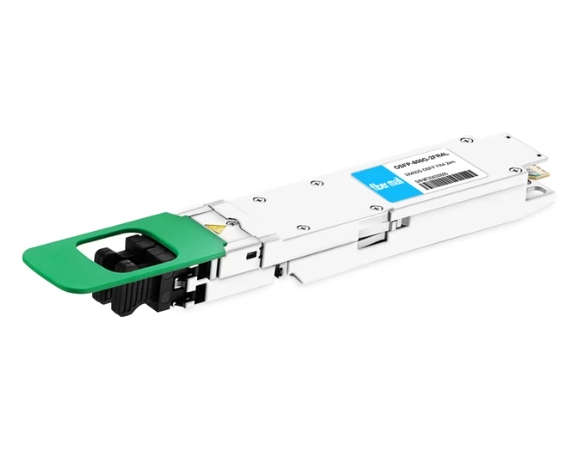
Common Issues with osfp112 Connector Compatibility
While integrating OSFP112 connectors, you may encounter many compatibility issues that can affect reliability and performance. One common problem is the physical form factor, where ensuring the appropriate fit of a connector into existing hardware may prove difficult, especially when dealing with older infrastructure. Moreover, it is important to have firmware versions matching OSFP112s and downstream devices because failure to do so can prevent these components from realizing their full potential or cause connectivity problems altogether. Another challenge is sticking with industry standards, as deviation from established specifications may lead to performance degradation. Lastly, heat dissipation should not be taken lightly since some network environments might not be designed for new higher-capacity connectors, which could result in overheating and subsequent failures. Thorough testing combined with adherence to compatibility guidelines is necessary for network optimization given these challenges.
How to Ensure Your Transceiver is Environmentally Tested
Follow these steps to test your transceiver environmentally:
- Look up the Manufacturer’s Specifications: The manufacturer should list which environmental testing standards their transceivers must meet. These ratings typically include temperature, humidity, vibration and shock, all necessary for a strong performance across different environments.
- Confirm Certifications: Ensure that the device is IEC, MIL-STD, or Telcordia GR-63 compliant. These are industry-wide accepted standards dictating how environmental tests should be conducted. Certifications mean that the product has undergone strict protocols designed to demonstrate its ability to work reliably under various conditions.
- Implement Multi-Layered Testing: Another strategy involves combining lab-based trials with real-world ones. First, recreate extreme temperatures or levels of humidity in controlled settings; next, deploy units out in the field to monitor their performance vis-à-vis actual usage scenarios.
It is important to know these points so that you can make sure your transceiver works well and resists being affected by surroundings. This will prolong its functioning and prevent any harm to network reliability.
Understanding OSFP Compliance and Industry Standards
The OSFP transceiver system, which is octal small-form-factor pluggable, has been designed to meet the standards of the industry that guarantee compatibility and performance in high-speed network environments. Compliance with OSFP includes following the rules set by various organizations such as IEEE (Institute of Electrical and Electronics Engineers) or OIF (Optical Internetworking Forum). These regulations cover electric and optic parameters like power consumption, data rate capability, and form-factor size, which are necessary for different network devices to work together.
Moreover, many tests are done on OSFP transceivers according to industry documents, including IEEE 802.3bs and OIF CEI-112G, that deal with 400G/800G Ethernet application testing. Following such standards ensures the best possible performance within a network and prepares products for market success because customers have faith in their reliability and compatibility with other equipment. With the increasing demand for higher bandwidth applications, it becomes more important to stick to OSFP compliance standards in all infrastructure development stages, thus ensuring easy maintenance later on.
Reference Sources
Frequently Asked Questions (FAQs)
Q: What is an osfp112 transceiver?
A: An OSFP112 transceiver is a highly developed optic module meant for quick data transfer. It supports the speed of 400G Ethernet, among other multiple technologies integrated with it, which ensures its performance is strong and reliable as per the OSFP MSA standards.
Q: How does the osfp112 interface with optical fiber?
A: Osfp112 interfaces optical fibers such as OM3 or OM4 through connectors like MPO-12 to effectively transmit and receive optical signals over different distances.
Q: What are the benefits of DR4 in osfp112 transceivers?
A: This term signifies DR4, which is found in some osfp112 transceivers and refers to high-speed data transfer across several lanes for enhanced performance and reduced latency on applications requiring 400G Ethernet connectivity standards.
Q: What standards does the osfp112 comply with?
A: The osfp112 complies with IEEE, OSFP MSA, CMIS 4.0, and 5.2, among other industry standards; thus, it can operate widely compatiblely in different network environments with reliable operations.
Q. Can the osfp112 transceiver operate at commercial temperatures?
A: Yes, the osfp112 transceiver is designed to work within the commercial temperature range, which ensures its proper functioning under typical data center conditions.
Q: What does the 800G OSFP AOC mean concerning osfp112?
A: The 800G OSFP AOC (Active Optical Cable) is unique because it combines both the transmitter and receiver into one assembly, thus providing a high data transfer speed of up to 800G with the help of the OSFP112 interface.
Q: How does thermal management work in osfp112?
A: The OSFP112 transceiver has far more complex thermal management capabilities than other systems. It uses a heat sink and has thermal monitoring features built into it, which enable it to work efficiently even when transmitting at very high data rates.
Q: What parts make up an osfp112 transceiver?
A: An osfp112 transceiver includes a transmitter, receiver, electrical interface, and optical fiber connectors. These components are made from tier-1 materials and offer great reliability and performance.
Q: Can you use the osfp112 transceiver on QSFP-DD systems?
A: Although having its interface, this unit may still be used within interconnection systems where compatibility with different high-speed standards like QSFP-DD is required, making it suitable for various modern data centers.
Q: What warranty comes with an OSFP112 transceiver?
A: There is no limit to what can be done to ensure customer satisfaction, so all our products, including the OSFP112 transceivers, have lifetime warranties. This assures users that these optical modules can be used over long periods without any problems, thus giving them peace of mind.
Related Products:
-
 NVIDIA MMS4X00-NS400 Compatible 400G OSFP DR4 Flat Top PAM4 1310nm MTP/MPO-12 500m SMF FEC Optical Transceiver Module
$700.00
NVIDIA MMS4X00-NS400 Compatible 400G OSFP DR4 Flat Top PAM4 1310nm MTP/MPO-12 500m SMF FEC Optical Transceiver Module
$700.00
-
 NVIDIA MMA4Z00-NS400 Compatible 400G OSFP SR4 Flat Top PAM4 850nm 30m on OM3/50m on OM4 MTP/MPO-12 Multimode FEC Optical Transceiver Module
$550.00
NVIDIA MMA4Z00-NS400 Compatible 400G OSFP SR4 Flat Top PAM4 850nm 30m on OM3/50m on OM4 MTP/MPO-12 Multimode FEC Optical Transceiver Module
$550.00
-
 NVIDIA MMS4X00-NM-FLT Compatible 800G Twin-port OSFP 2x400G Flat Top PAM4 1310nm 500m DOM Dual MTP/MPO-12 SMF Optical Transceiver Module
$1199.00
NVIDIA MMS4X00-NM-FLT Compatible 800G Twin-port OSFP 2x400G Flat Top PAM4 1310nm 500m DOM Dual MTP/MPO-12 SMF Optical Transceiver Module
$1199.00
-
 NVIDIA MMA4Z00-NS-FLT Compatible 800Gb/s Twin-port OSFP 2x400G SR8 PAM4 850nm 100m DOM Dual MPO-12 MMF Optical Transceiver Module
$650.00
NVIDIA MMA4Z00-NS-FLT Compatible 800Gb/s Twin-port OSFP 2x400G SR8 PAM4 850nm 100m DOM Dual MPO-12 MMF Optical Transceiver Module
$650.00
-
 NVIDIA MMS4X00-NM Compatible 800Gb/s Twin-port OSFP 2x400G PAM4 1310nm 500m DOM Dual MTP/MPO-12 SMF Optical Transceiver Module
$900.00
NVIDIA MMS4X00-NM Compatible 800Gb/s Twin-port OSFP 2x400G PAM4 1310nm 500m DOM Dual MTP/MPO-12 SMF Optical Transceiver Module
$900.00
-
 NVIDIA MMA4Z00-NS Compatible 800Gb/s Twin-port OSFP 2x400G SR8 PAM4 850nm 100m DOM Dual MPO-12 MMF Optical Transceiver Module
$650.00
NVIDIA MMA4Z00-NS Compatible 800Gb/s Twin-port OSFP 2x400G SR8 PAM4 850nm 100m DOM Dual MPO-12 MMF Optical Transceiver Module
$650.00
Related posts:
- QSFP-DD vs OSFP vs QSFP56 vs QSFP112: Advantages and Challenges
- 40G QSFP BIDI vs 40G QSFP SR4 vs 40G QSFP UNIV
- Exploring the World of QSFP Transceivers: Cisco Compatible Solutions for MMF Optical Networks
- The Ultimate Guide to Fortinet Compatible Transceivers: Understanding Fortinet FN-TRAN-SFP+SR and More



